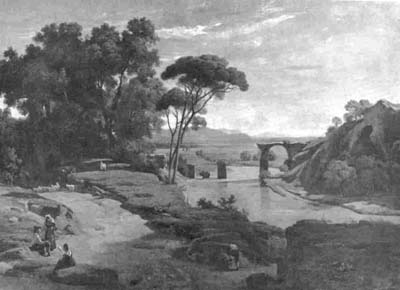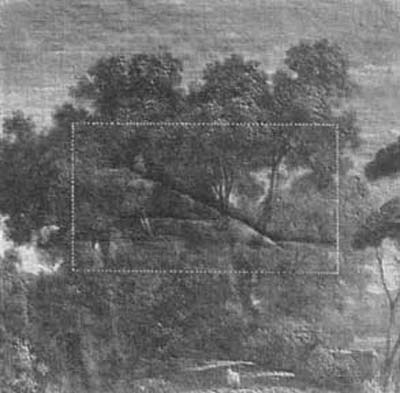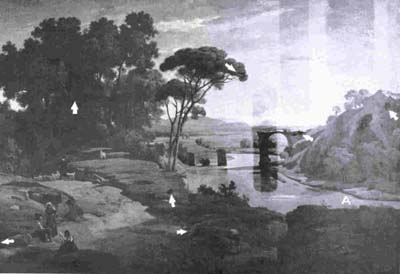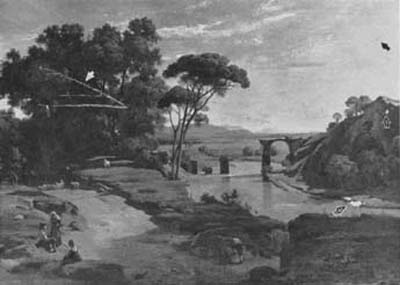
Bulletin 2 (I:2), December 1963
Home
Français
Introduction
History
Annual Index
Author &
Subject
Credits
Contact





From the Laboratory of the National
Gallery
by Nathan Stolow,
Chief Conservation and Scientific Research
Division
Résumé en français
Pages 1 |
2 | 3
| 4 | 5
In the post-war period there has been an increasing interest
in the application of scientific method to the examination and
preservation of works of art. A recent compilation of UNESCO (1)
reveals the existence of at least 133 museums and related
institutions in 38 countries in which conservation laboratories have
been established. In major centres scientific research is also
carried out. (2)
Scientific interest is much in evidence at the National Gallery of
Canada as recent Annual Reports (3) show. The following case
histories and reports discuss in some detail most recent
conservation work and, as well, the research undertaken in the
fields of deterioration and environmental control by the Conservation and Scientific Research Division. (4)
Le Pont de Narni
By Corot
This painting was acquired by the National Gallery in 1940. No
previously recorded technical history was available, though it was
fairly obvious from a cursory examination of its condition that it
had been restored before, at least once, between the estimated date
of execution (c. 1826-27) and the date of its accession by
the National Gallery. Superficial examination had led one to
believe that the overall yellowish tone was not of Corot's doing
but was more likely that of discoloured varnish. The opportunity to
examine this painting for possible restoration and conservation
treatment confirmed this. Examination of Figs. 1, 3, and 4, shows
the presence of the 'masking yellowed varnish'. In addition, the
disfiguring crack formation on the left side of the canvas (Fig. 2 -
as seen by raking light), could now be properly assessed in terms
of the cleaned picture, once freed of restorations and over-painting.
The painting had been relined in the past, and considerable pressure
must have been applied as seen in the fabric imprint (Fig. 4 at A).
The adhesive used was probably animal glue with a resin additive. A
study of the weave pattern along the edges of the painting showed
the absence of the expected 'scalloped' patterning along the left
and right sides. This suggested the trimming of the painting some
time in the past. Examination of the paint surface showed the
typical wrinkling of Corot's oil-rich paint, especially in the
roadway (Fig. 1). Cleaning tests with a variety of solvent mixtures
indicated that the varnish layer was of the natural resin type, (5)
and could actually be safely removed with shell sol, (6) acetone, and
cellosolve (ethylene glycol monoethyl ether) in the proportions
2:1:1. From these tests it was established that the overall tone of
the picture would be cooler, and that there would be a greatly
increased feeling of space and depth throughout. Also indicated in
the cleaning tests were the existence of previous restorations,
abrasions, and areas of overpaint ( see Figs. 3 and 4). The location
and extent of many of these areas could be determined by means of
binocular micro-scope examination of the surface, by means of
ultra-violet fluorescence, and by infra-red photography.
On the basis of the condition noted it was decided to clean the
painting entirely, reline it, re stretch it on a new stretcher
frame, compensate losses by filling and in-painting, and apply a
final protective varnish. A summary of the various steps in the
treatment follows: (7)
The reverse of the canvas was vacuum cleaned to remove surface dirt
and accretions. The varnish was then removed with solvent mixture
previously determined. At the same time most of the previous
restorations and retouches were dissolved away. In some areas the
retouches were completely removed by application of a scalpel. The
painting was freed from its stretcher frame by removing nails from
edges. Paper strips were glued to the four edges of the freed
painting and were attached while damp to a larger temporary
stretcher. (This method is referred to as the 'Dutch method' and
enables the canvas to be temporarily held in position in a manner
permit ting access to both front and back of painting.)
The surface of the painting was faced with a type of wet-strength
paper using beeswax and carbon tetra-chloride mixture as the
adhesive, applied while warm. After cooling the painting was
reversed and the old relining canvas was carefully separated from
the original canvas by mechanical means. The remains of old
adhesive were then carefully scraped away by means of a scalpel. This
proceeded very slowly owing to the extent of penetration of the
adhesive into the weave of the original canvas. It was discovered
that previous tears and holes in the original were filled with a
white lead composition and shellac. These areas had to be worked
clean of extraneous matter.
The cleaned back of the canvas was locally reinforced with strips of wet-strength paper teased at edges using LePage's Bond-Fast glue (a type of polyvinyl acetate emulsion adhesive) in the regions of tears, holes, etc. Following this the entire back was impregnated with a wax-resin composition using an electric hand iron with thermostatic control. The composition of this adhesive was: beeswax 75%, damar resin (Singapore) 20%, and gum elemi 5%, melting range approximately 60 to 70 degrees centigrade. After impregnation the painting was turned face up and the facing paper and beeswax adhesive were removed by application of a low boiling hydrocarbon (petroleum benzine) solvent. At this time the paper supporting strips (Dutch method) were removed.
The relining, or reinforcing canvas selected was cotton of smooth
texture and weave, similar to that of the original, having 27
horizontal threads and 31 vertical, double woven in both directions.
The relining canvas was placed on an expandable temporary stretcher,
and was pre-shrunk with water, and when dried, restretched. It was
then impregnated with the same composition of wax-resin adhesive as
noted above, employing the heated surface of a thermostatically
controlled hot table. The relining process was then carried out on
the same hot table using a rubber latex sheet with vacuum pressure
to bind the new canvas to the original while the correct degree of
heating was applied to distribute the wax-resin adhesive into and
through the surfaces to be bonded together. The duration of the
warming - infusing - cooling cycle was approximately 2 hours, the
temperature ranging upwards to 60 degrees, and the applied pressure
(at the edges of the rubber latex enclosure) between 1/2 and 2/3 of
an atmosphere. Descriptions of the hot table vacuum relining
technique have been reported elsewhere. (8, 9, 10) The relined,
cooled painting was restretched on a new 4-member stretcher frame
with tite-joint fasteners and metal dowels installed in the mitred
corners. This differed from the type known as the LeBron stretcher
in that only part of the tite-joint fastener was used. (11) Thus
instead of using the normal retaining ring of the tite-joint
fastener a 1/4" hanger bolt was used, allowing for more
positive tightening and loosening of the corners of the stretcher
than was formerly possible. Following this the excess film of
wax-resin on the surface of the painting was removed with petroleum
benzine solvent.
Remains of old cracked fillings were mechanically removed and new
fillings made with a paste of LePage's Bond-Fast glue and calcium
carbonate. The appearance of the painting after cleaning, relining,
filling, but before in-painting is shown in Fig. 5. The entire
painting was then brush-coated with Acryloid B72 resin in xylene
solvent. (12) After drying the in-painting was commenced using
permanent powder colours ground in a solution of duPont Lucite 44
(normal butyl methacrylate polymer) in xylene. In this way
the filled areas were made to match in colour the surrounding paint.
Following this the painting was sprayed with a 10% solution of the
same resin in xylene, and additional in-painting was carried out
where necessary. Finally a second spray coat of the resin was
applied.
Next Page | The Virgin Child
1 | 2 |
3 | 4 |
5
Annual Index | Author & Subject | Credits | Contact
This digital collection
was produced under contract to Canada's Digital Collections program,
Industry Canada.
"Digital
Collections Program, Copyright
© National Gallery of
Canada 2001"